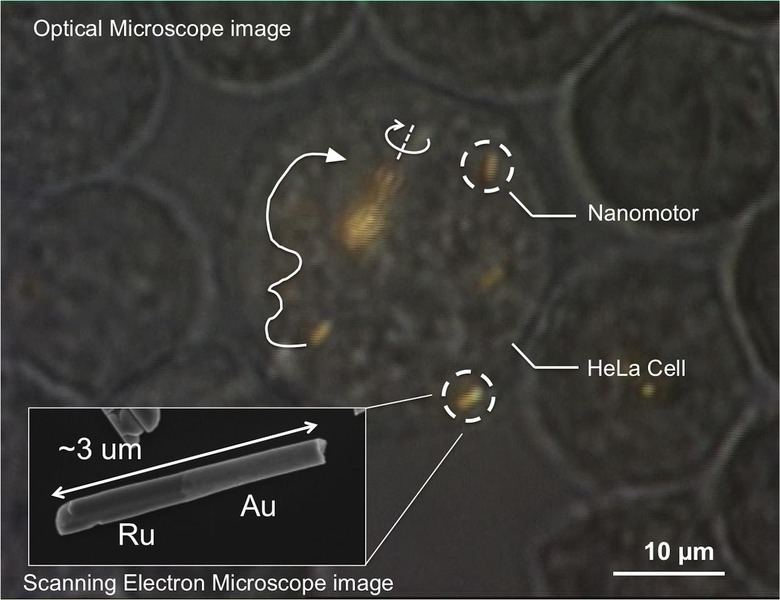Nanomotors navigate live human cells in "Fantastic Voyage" style
Tiny motorized probes have navigated through live human cells steered by magnetic fields and propelled by ultrasonic waves for the first time, opening the door to fighting cancer or performing intracellular surgery from the inside. The nanomotor research, handiwork of a team led by Tom Mallouk, Evan Pugh Professor of Materials Chemistry and Physics at Penn State, sees tiny, missile-shaped probes ingested by cells and then activated with ultrasonic waves, at which point they begin to move around inside the cell and impact with its internal structure.
Controlled use of those impacts could be one way of treating disease in the future, Mallouk suggests. Currently, the movement is relatively blunt in its usefulness – the nanomotors can effectively mangle the internal cell structure, destroying it, or even punch out of the cell altogether, piercing its membrane – but future iterations could be more precise.
That might mean carrying out intracellular surgery or delivering drugs to very specific tissues, without requiring intrusive surgery. Magnetic fields can be used to steer the movements, and the Penn State team also found that they could individually control nanomotors without affecting others nearby.
"One dream application of ours is Fantastic Voyage-style medicine, where nanomotors would cruise around inside the body, communicating with each other and performing various kinds of diagnoses and therapy. There are lots of applications for controlling particles on this small scale, and understanding how it works is what's driving us" Tom Mallouk, Penn State
"Autonomous motion might help nanomotors selectively destroy the cells that engulf them," Mallouk said of the research. "If you want these motors to seek out and destroy cancer cells, for example, it's better to have them move independently. You don't want a whole mass of them going in one direction."
It's not the first time that scientists have explored how they could navigate tiny machines through the body, though earlier iterations of the technology could potentially have caused more problems than they addressed. A team at Penn State came up with chemically-powered nanomotors a decade ago, but the fuels would have been damaging to tissue, and were never tested in living cells.

In contrast, the ultrasonic-powered versions have been successfully piloted through HeLa cells – human cervical cancer cells – and even followed external directions to form structures.
